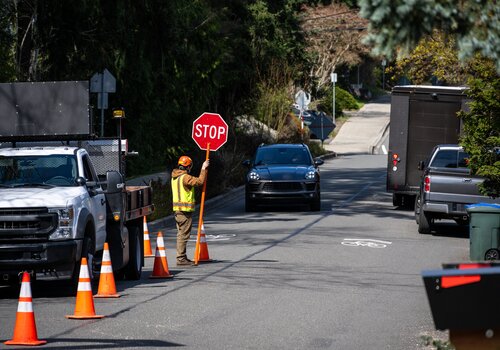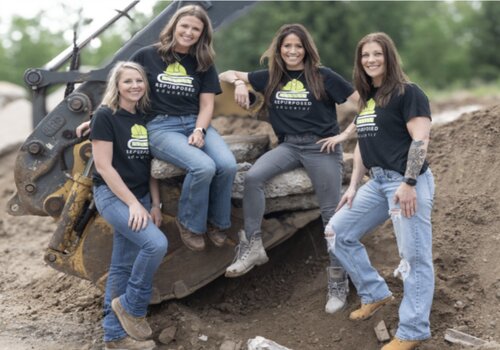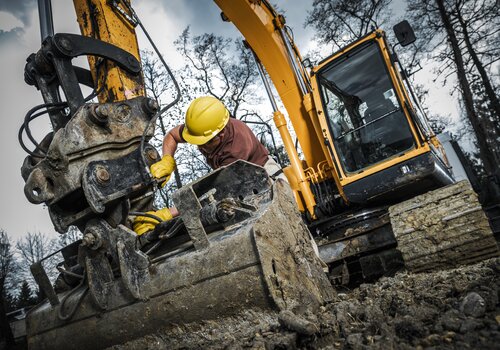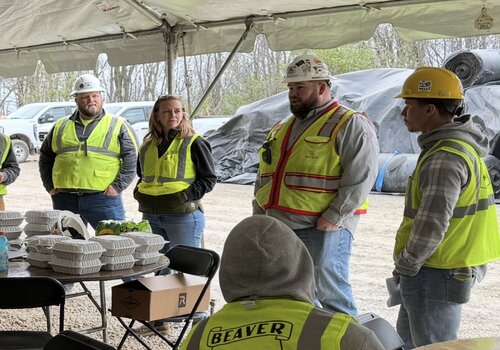Working on busy roads is no walk in the park. Between the loud machinery, flying debris and distracted drivers, road paving crews face serious safety risks every day. Whether you're the boots on the ground or the person coordinating the job, protecting your team is non-negotiable. The good news? A few proactive steps can drastically reduce the chance of incidents and ensure the job gets done without a hitch.
Here are six actionable roadwork safety tips for construction crews working in high-traffic zones—with zero fluff and maximum impact.
1. Plan Ahead: Traffic Control Should Be Top Priority
Why it matters: An effective traffic control plan can be the difference between a smooth workday and a dangerous close call.
What to do:
-
Work with local DOT officials to design a proper traffic control layout, including lane closures, detours and signage.
-
Conduct a pre-project walkthrough to identify risky intersections, blind spots and turning zones.
-
Use high-visibility signage well in advance of the work zone to alert drivers early.
Bonus tip: If possible, schedule paving projects during off-peak hours (overnight or early mornings) to minimize traffic volume.
2. Suit Up: Visibility Gear Saves Lives
Why it matters: Drivers may not be fully alert, and being clearly visible can buy valuable reaction time.
What to do:
-
Require ANSI Class 2 or 3 reflective safety vests for all workers at the site.
-
Encourage the use of helmets, steel-toe boots and gloves—even in warm weather.
-
Use illuminated or flashing gear for nighttime paving projects.
Pro tip: Check gear weekly for wear and tear. Faded reflectors aren’t just uncool—they’re dangerous.
3. Barriers and Buffers: Build a Physical Safety Zone
Why it matters: Visual warnings are great, but physical protection helps even more when things go sideways.
What to do:
-
Install cones, barrels, barricades and jersey walls to separate workers from vehicles.
-
Use crash attenuators (impact cushions) near entry points to absorb potential collisions.
-
Set up buffer zones to allow space between the traffic lane and the work area, especially near heavy machinery.
Safety reminder: Don’t rely solely on flaggers—combine human and physical barriers for full protection.
4. Train and Communicate: Everyone Should Know the Drill
Why it matters: The best safety gear means nothing if the crew doesn’t know what to do in an emergency.
What to do:
-
Conduct regular safety briefings before each shift, especially when traffic flow or weather changes.
-
Train all workers to recognize hazards, react to driver behavior and operate communication devices.
-
Use hand signals, radios or headsets to maintain constant communication between team members.
-
Real-world tip: Rotate roles during the day to keep everyone mentally sharp. Fatigue leads to mistakes.
5. Protect Flaggers: Frontline Workers Need Extra Support
Why it matters: Flaggers are often closest to moving vehicles, making them uniquely vulnerable.
What to do:
-
Assign flaggers to safe, visible positions with escape routes if a vehicle veers off course.
-
Provide high-visibility clothing, stop/slow paddles with lights and radio contact.
-
Use signage to warn drivers “Flagger Ahead” well in advance of their location.
Team tip: Rotate flagging duties every few hours to prevent fatigue and increase alertness.
6. Watch the Weather—and Driver Behavior
Why it matters: Rain, heat and glare impact both worker performance and driver visibility.
What to do:
-
Monitor conditions using weather apps and adjust work schedules if visibility or surface traction drops.
-
Account for sun angles that can blind drivers during sunrise or sunset—especially in east-west corridors.
-
Brief crews on how to recognize distracted, impaired or aggressive driving behavior.
Quick fact: According to the FHWA, most work zone crashes occur in daylight, often in clear weather—complacency kills.
Safety Is the Foundation of a Successful Paving Job
You can’t control every factor in a high-traffic paving project, but you can create a work culture where safety is part of every conversation. From clear communication to proper gear and thoughtful scheduling, these steps help keep everyone focused, protected and ready to pave with confidence.
Share this article with a colleague so everyone is ready before the cones come down. Because when the cones come down and traffic flows freely again, you want to celebrate a job done right—and done safely.
Read these next to level up your paving safety game: Nighttime Paving Safety Tips, Technological Advancements to Improve Paving Quality and Too Hot (or Cold) To Handle: 5 Essential Tips for Asphalt Paving in Extreme Temperatures.
Photo credit: SHUTTERSTOCK.COM/KNELSON20












